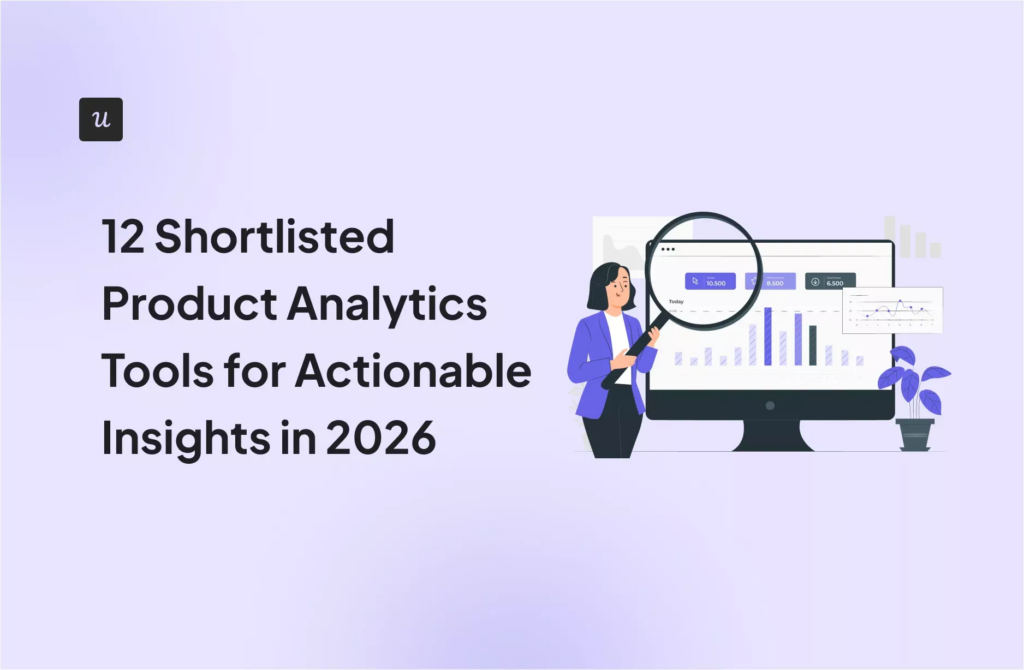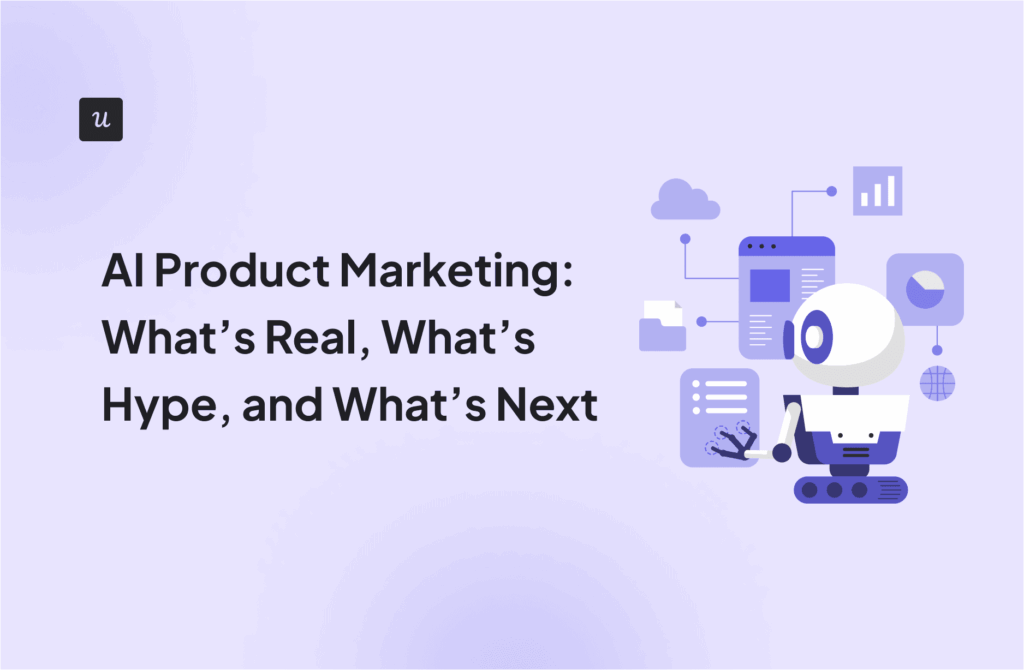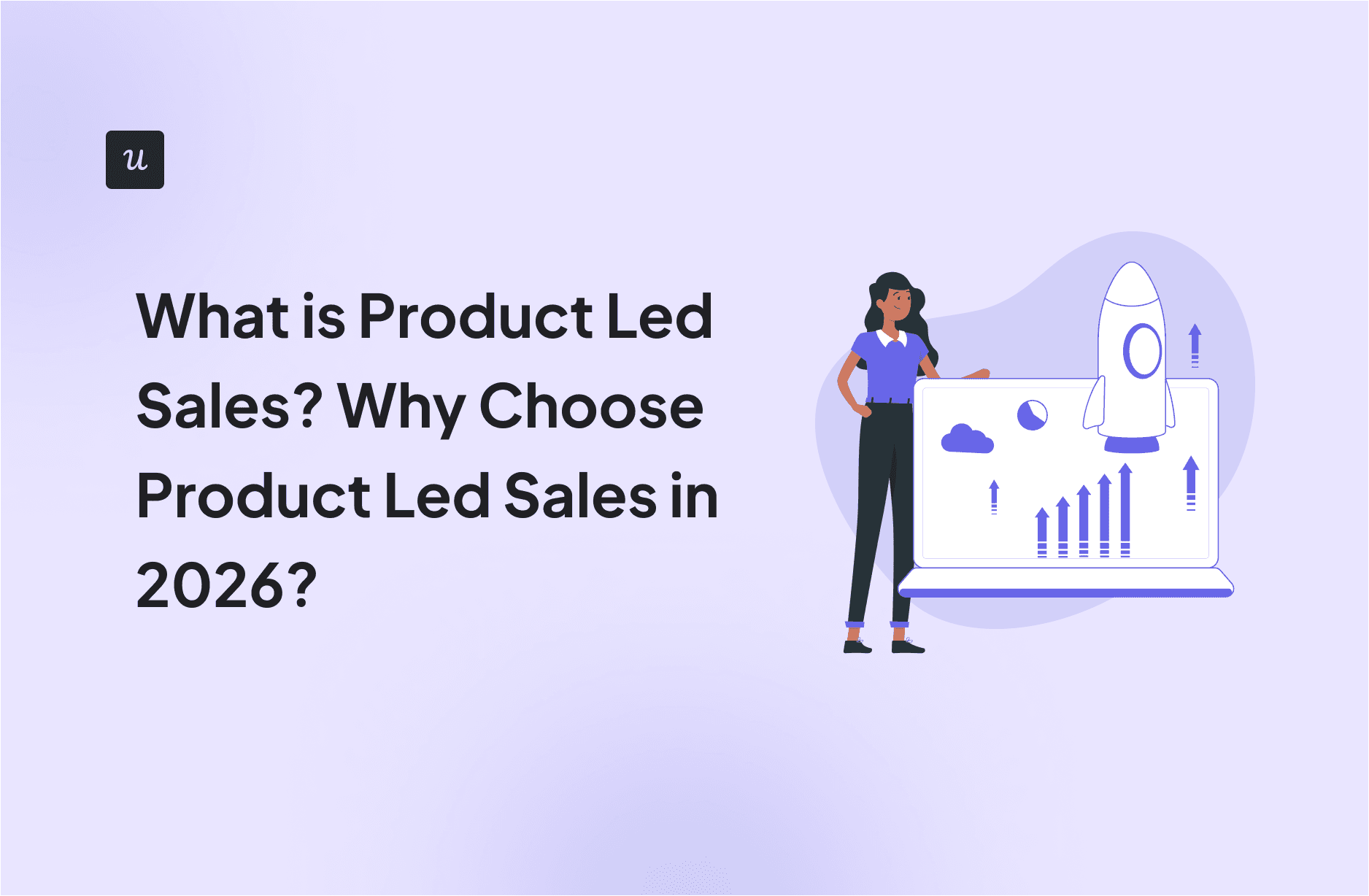
What is Product Led Sales? Why Choose Product Led Sales in 2026?
I spend most of my days thinking about product-led growth. For me, it’s not just a marketing strategy; it’s a belief that a great product is the most powerful engine for growth.
But I’ve noticed a problem. Many SaaS companies hear “product-led” and think it means “no sales team.” They built a fantastic self-serve funnel, but then they hit a ceiling. User engagement looks great at the start, but the bigger, more complex deals stall out, lost in a self-serve limbo.
This is where the conversation gets interesting. What if you could have the best of both worlds? What if your product could do the initial heavy lifting, and a smart, data-driven sales team could step in at the perfect moment to guide those high-value users across the finish line? That’s the core idea behind Product-Led Sales (PLS).
If you’re a product manager, marketer, or founder in B2B SaaS, this article is for you.
Try Userpilot Now
See Why 1,000+ Teams Choose Userpilot

So, what exactly is product-led sales?
Product-led sales is a go-to-market strategy where the product itself is the main vehicle for acquiring and activating users.
Meanwhile, a sales team leverages product usage data to convert and expand those users. It isn’t about replacing your sales team; it’s about making them smarter.
Think about the last time you tried a new piece of software. You probably signed up for a free trial or a freemium plan. You clicked around, explored some features, and tried to solve a small problem. You were experiencing the product’s value firsthand. That’s the “product-led” part.
Now, imagine that as you start using the tool more heavily (inviting teammates, approaching a usage limit, or exploring an advanced feature), you get a well-timed email or in-app message.
It’s not a generic sales pitch. It’s from a real person who says, “Hey, I noticed you’re getting a lot of value out of our collaboration feature. Did you know you could automate that entire workflow on our Pro plan? Happy to show you how.”
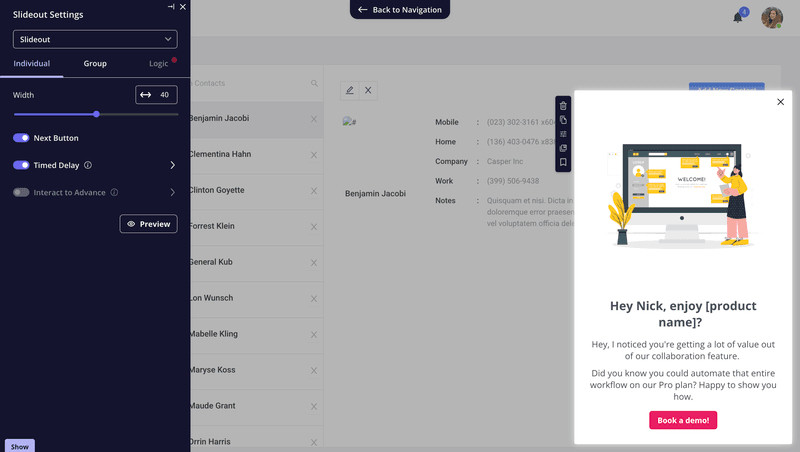
That is product-led sales. Instead of cold calling, they engage with warm, Product-Qualified Leads (PQLs). These include users who have already demonstrated buying intent through their actions within the product.
This approach is all about creating better product experiences that naturally guide users toward seeing more value.
Product-led sales vs. sales-led
A purely sales-led motion relies on marketing to generate leads (MQLs). This is the classic pattern behind sales-led growth, where teams depend heavily on demos, calls, and long nurturing cycles before users even experience the product.
It’s often a high-touch engagement model from the start, which creates high customer acquisition costs.
A purely product-led motion relies on the product to do everything. It’s efficient for acquiring individual users or small teams. But it often struggles to convert large organizations with complex buying processes.
Product-Led Sales combines the efficiency of PLG with the strategic impact of sales. It uses product usage data to identify the most promising leads. This allows sales to engage at the perfect time with a highly relevant message.
Why even the best PLG companies eventually need sales?
The dream of a product that sells itself is powerful, but reality often gets in the way. Our study of 547 SaaS companies across 7 industries shows that 40-50% of users who sign up for a free trial never come back after the first month.
They get stuck, distracted, or just can’t find the value on their own. Without a human touchpoint, many potential customers slip through the cracks.
Furthermore, as you move upmarket, the buying process becomes more complicated. An end-user might love your product, but they can’t sign a $50,000 annual contract. They need to get buy-in from their manager, finance, and IT.
A sales team is crucial for navigating these internal hurdles, handling security reviews, and negotiating enterprise-level contracts.
Even the most mature sales-led companies still rely on this structure, especially once they start moving upmarket. They are essential for driving value-based growth across an entire organization.
By adding a sales layer, you’re building a second engine for growth.
The self-serve motion continues to acquire users efficiently while the sales team focuses on converting high-potential accounts and expanding them. This ultimately shortens your CAC payback period and increases lifetime value.
How to know if product-led sales is right for you?
Product-Led Sales sounds great in theory, but it’s not a magic bullet for every SaaS company. Before overhauling your go-to-market strategy, here are the questions I always suggest you ask yourself:
How complex is your product?
PLS works best when users can achieve an initial “Aha!” moment without extensive hand-holding. If your product is intuitive and delivers value quickly, you’re in a great position.
If it requires a multi-week implementation, custom configuration, or deep technical knowledge just to get started, a pure self-serve model might lead to frustration.
That doesn’t mean PLS is impossible, but your focus might need to be on creating a sandbox environment or a guided interactive demo first.
A good example of this is Kommunicate’s guided walkthrough. With it, you can instantly see how the feature works, how it looks in action, and what your customers will experience.
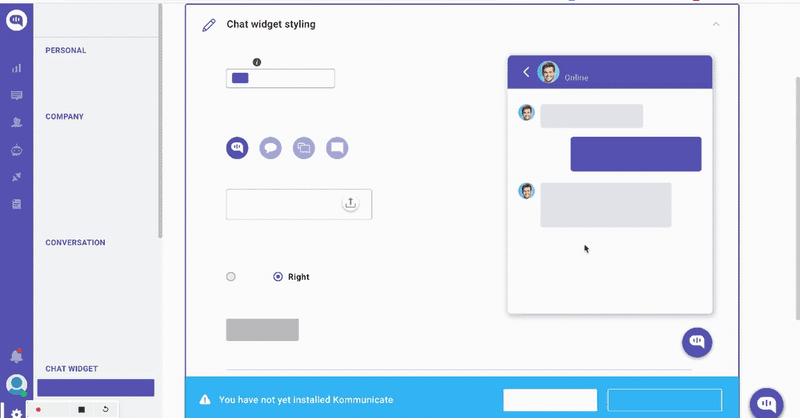
When users can interact with something functional within minutes (like customizing this chat widget), you naturally shorten the customer journey.
Additionally, you make it easier to identify early product-qualified accounts.
Who is your target audience?
Are your ideal customers tech-savvy individuals or SMBs who prefer to self-serve? If so, PLS is a natural fit. They expect to try before they buy.
However, if you sell primarily to large enterprises in regulated industries, they may have procurement processes that demand a more traditional, high-touch sales approach from the start.
Even in this case, PLS can be used to qualify champions within the organization before engaging the entire buying committee.
Do you have a freemium or free trial model?
This is the engine of a PLS motion. You need a low-friction way for users to get their hands on the product.
Without a free trial or a meaningful freemium plan, you have no way to gather the usage data needed to identify PQLs. A successful PLS strategy depends on a well-designed user onboarding process that guides new signups to value as quickly as possible.
A favorite example of mine is Impala. They used Userpilot to build no-code, personalized onboarding flows and a lightweight resource center that supported users directly inside the app.
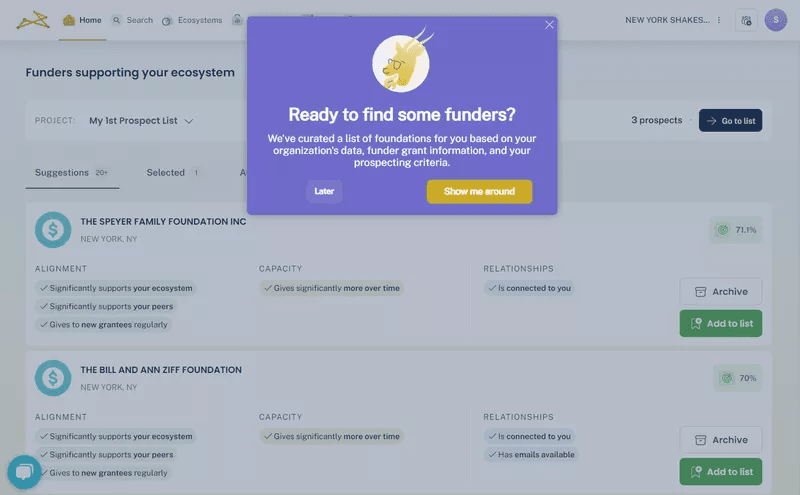
The result says it all. Users who completed the flow were twice as likely to hit their activation milestone! That’s the power of giving free users a fast path to meaningful value.
Can you track in-product behavior?
You can’t have a PLS strategy without data. You need to see how users interact with your product in real time: what they click, where they drop off, and which actions signal value.
Without this visibility, you can’t define strong PQLs, identify product-qualified accounts, or trigger timely, relevant sales outreach.
You need solid product usage analytics to make this work. A tool like Userpilot makes this much easier with autocapture and no-code analytics.
Product teams and customer success teams can access the product usage insights they need without waiting on engineering.
It gives you the foundation to understand customer needs, spot early power users, and support your product-led sales approach with behavior-based signals.
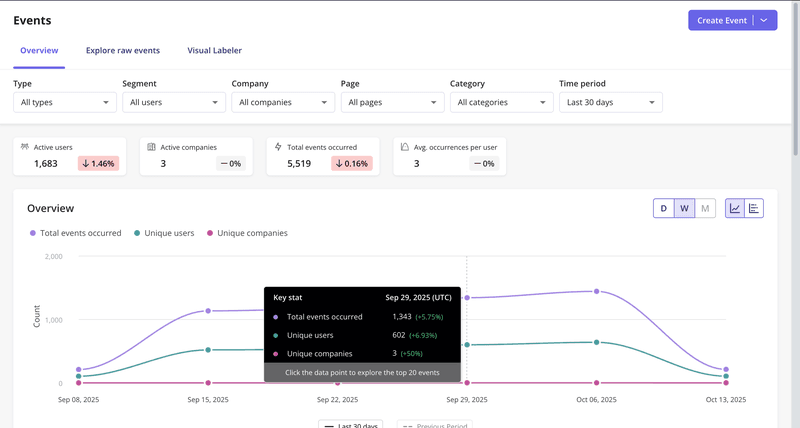
If you answered “yes” to most of these, you’re a prime candidate for Product-Led Sales. And honestly, most companies adopting PLG eventually find themselves in a similar position.
If not, it doesn’t mean you should give up, but you may have some foundational work to do first. Think of simplifying your onboarding or implementing better analytics tools.
When do sales-led motions still make sense to you?
I’ll say this: Product-led sales is powerful, but it’s not a fit for every situation. There are plenty of scenarios where a sales-led model is still the smarter, faster, or more realistic path to drive revenue growth.
Here’s where I’d still lean on sales-led tactics:
- You’re selling to mid-market or enterprise customers with complex buying processes: Procurement reviews, compliance checks, and multi-stakeholder approval chains still require direct sales involvement.
- Your product is too complex for self-serve activation: If users can’t experience value without guided onboarding or solution engineering, a pure product-led approach won’t work.
- You sell premium, high-priced, or customized plans: These often need ROI conversations and tailored contracts before closing deals, which makes a traditional sales-led approach more effective.
- You operate in regulated or high-trust industries: Enterprise customers in finance, healthcare, or government often expect early interaction with sales representatives to navigate requirements.
- You don’t have a freemium model or enough product usage data: Without free users generating behavior signals, a product-led sales model can’t function, and sales engagement has to step in early.
- You rely heavily on outbound or traditional marketing for demand generation: If your sales pipeline is built top-down, a sales-led strategy remains the primary driver of customer growth.
How to build your product-led sales strategy?
Building a product-led sales strategy isn’t complicated, but it does need structure. I usually break it down into a few simple steps: make sure the product delivers value on its own, define what a high-intent user looks like, and give your sales team the context they need to help at the right moment. Here’s how I approach it:
Step 1: Ensure you have a solid product experience
Before you can effectively layer on a sales-assist motion, your product must be capable of delivering value without any human hand-holding.
If the initial experience is clunky or confusing, users will churn long before they ever become a PQL.
We focus on two foundational pillars:
- Frictionless onboarding: We use interactive walkthroughs, welcome modals, and checklists to create a goal-oriented onboarding experience. Such small nudges stack up to a far more seamless customer experience and help new signups hit their “Aha!” moment faster.
With Userpilot, it’s easy to design personalized experiences for your users since day 1. Simply start with a welcome survey like this.
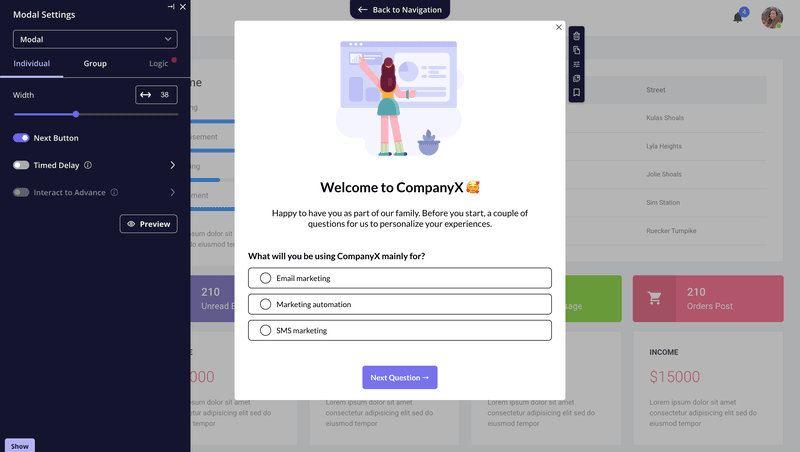
- Robust self-service support: A comprehensive and easily searchable knowledge base is non-negotiable. This empowers users to find their own answers 24/7, building confidence and reducing friction.
Step 2: Define your PQL triggers
Your Product-Qualified Lead (PQL) definition is the cornerstone of your entire PLS motion. It’s the “if-then” statement that activates your sales team.
A strong PQL definition must be specific, measurable, and highly correlated with a user’s likelihood to convert. A vague definition like “active users” is useless.
For example, for a project management tool, a PQL could be: “A user on a free plan in an account with 3+ active users who has created 5+ projects AND integrated their Google Calendar in the first 14 days.” This level of precision is critical.
The bar for a PQL should be high; you’re looking for an undeniable signal. For instance, Slack famously considers a team that sends 2,000 messages a PQL, armed with the knowledge that these accounts have a 93% chance of converting to a paid plan. That’s a signal worth acting on.
One thing that makes this much easier today is having the right product usage data at your fingertips. With Userpilot, you can find these high-intent patterns without digging through dashboards or relying on engineers.
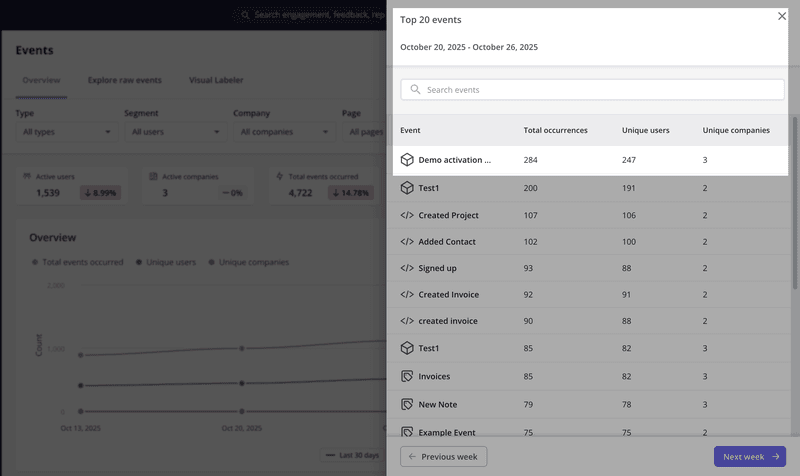
You can look across user profiles and see which actions correlate with product conversion (like hitting a usage limit or exploring premium features). Then use such data to set reliable PQL triggers.
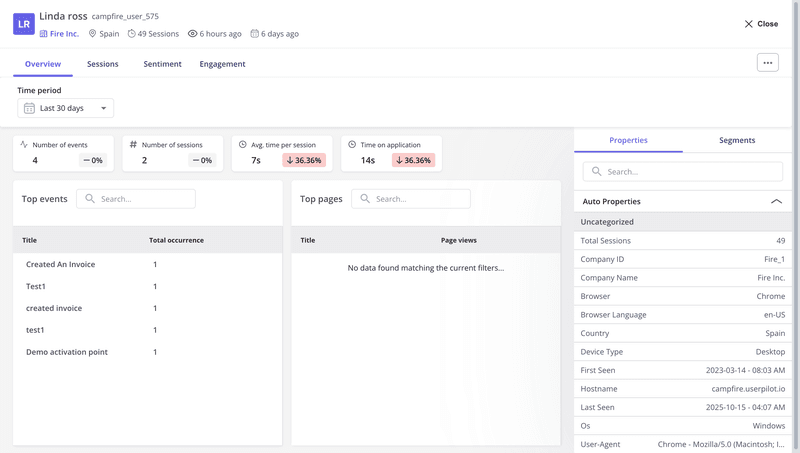
And with our upcoming AI releases, this gets even faster. Instead of manually hunting for signals, the system will:
- Highlight leading indicators for you.
- Explain why they matter.
- Suggest which accounts your sales team should talk to next
If you want early access, join the beta here.
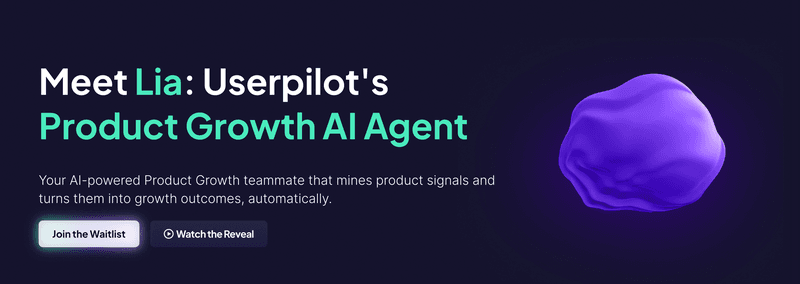
Common ways to identify PQLs
While every PQL definition is unique to a company’s product, they often fall into three categories. Use these as a starting point to find your own high-intent signals.
- Usage and adoption thresholds: These signals show a user or team is deeply embedding your product into their workflow.
- An account creates 5+ projects and invites 3 or more teammates.
- A user executes a key, high-value action more than 10 times in a month (e.g., running a report, exporting data, completing a workflow).
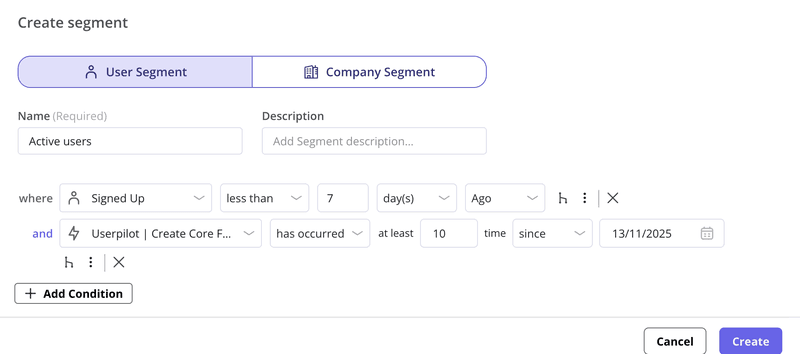
-
- An account hits 80% of its API call limit or data storage cap for their current plan.
- Upgrade and purchase intent signals: These are explicit actions showing a user is looking for more power and is aware of paid features.
- A user on a free trial or freemium plan repeatedly clicks on a premium, paywalled feature.
- A user visits the pricing page or enterprise contact page multiple times within a week.
- An admin from an existing team account tries to add a new seat but has hit their plan’s limit.
- Firmographic and “hand-raiser” signals: These combine user behavior with company data, revealing a high-value account that needs attention.
- 10+ users from the same corporate domain (e.g., @acme-corp.com) sign up within 7 days. This indicates organic, viral spread within a high-value account, a powerful signal that often requires intervention to consolidate the account and prevent churn.
- A user from a pre-defined Ideal Customer Profile (ICP) company (e.g., Fortune 1000, >500 employees) completes the onboarding checklist.
- A user clicks an in-app “Contact Sales” or “Request a Demo” button after completing a specific task.
Step 3: Get your teams aligned
PLS is a team sport. It breaks down the traditional silos between Product, Marketing, and Sales. Everyone needs to be working toward the same goal: helping users succeed with the product.
- Product must build a product with a smooth onboarding flow and create “PQL tripwires” (like feature gates or usage limits) that naturally lead users toward a sales conversation.
- Marketing shifts from generating MQLs (Marketing Qualified Leads) to driving high-quality signups for the free trial or freemium product. Their job is to get users into the product.
- Sales must transform from cold callers to product consultants. They need to understand the product deeply and use usage data to have relevant, helpful conversations.
This often requires us to rethink compensation plans and set shared goals around PQLs and conversions, not just demos booked or leads generated.
Step 4: Equip your sales team with the right data
Your sales reps can’t act on PQL signals if they can’t see them. This means integrating your product analytics platform with your CRM (like Salesforce or HubSpot).
A sales rep should be able to look at a contact and see exactly what they’ve done in the product. Creating different customer segments based on behavior can help reps prioritize their outreach effectively.
To make this actually work, you need a product analytics tool that syncs both ways with your CRM. That way, reps don’t have to guess where a user is in the sales funnel or dig through dashboards to understand the sales process.
With Userpilot’s two-way sync for HubSpot and Salesforce, your team can see product usage directly inside the CRM and push CRM data back into your in-app experiences. This kind of visibility is especially important for product-led companies that rely on bottom-up adoption.
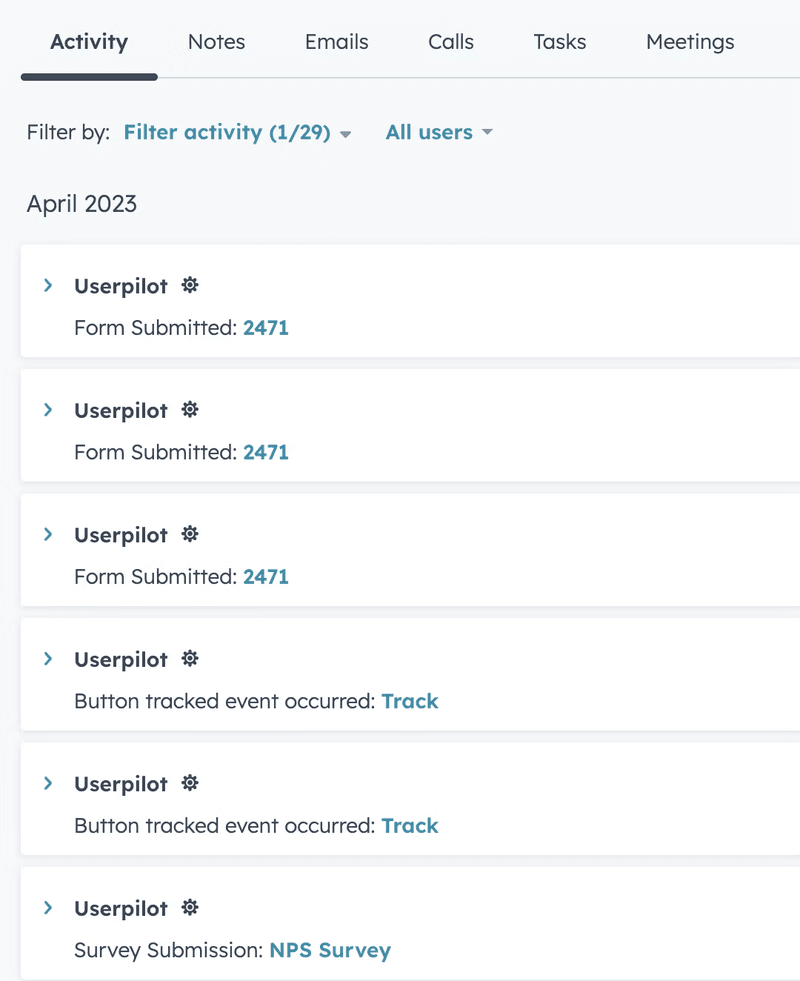
You might consider creating a “Sales Assist” playbook with a set of rules of engagement for every PQL scenario. This is where product-led sales work really starts to scale, because reps finally know when and why to reach out. Here’s the checklist:
- Integrate your tech stack: As discussed, product analytics data (the “what”) and firmographic data (the “who”) must be piped directly into your CRM. A sales rep must see a PQL alert and the specific user activity that triggered it in one unified view. This data is the fuel for their outreach.
- Segment your PQLs: Not all PQLs are created equal. A user from a 10,000-person enterprise account hitting a usage limit requires a different approach than a 5-person startup exploring a gated feature. Create tiers (e.g., Tier 1 for high-value ICP accounts, Tier 2 for smaller teams) to assign the right resources and outreach strategy.
- Execute helpful, contextual outreach: Generic outreach is a momentum killer. An effective playbook uses product data to be hyper-relevant and genuinely helpful. The rep’s job is to connect the user’s recent action to a more valuable outcome.
Here’s an outreach example
For example, if users hit project limits. Instead of saying:
“Hi John, just checking in on your trial. Looks like you’re using the tool a lot! Let me know if you’d like to book a demo to discuss upgrading.”
Your sales team can say:
“Hi John, I saw you just hit the 10-project limit. Congrats on getting the team so organized! A lot of teams in your situation find our custom templates a huge time-saver for new projects. Do you have 15 minutes this week to explore if that, and unlimited projects, could accelerate your workflow?”
Step 4: Measure and iterate on your model
Your PLS engine is a living system, not a one-time setup. Your first PQL definition is a hypothesis, and your first playbook is a draft.
Commit to a cycle of continuous improvement by obsessively tracking and analyzing these key metrics.
- Signup-to-PQL rate: Of all the new users who sign up for your product, what percentage become a PQL within a given timeframe (e.g., 30 days)? A low rate might indicate your PQL definition is too narrow, or your onboarding experience isn’t effectively guiding users to value.
- PQL-to-customer conversion rate: Of all the users who become PQLs, what percentage convert to a paying customer? This is the primary measure of your sales assist team’s effectiveness. A strong PQL-to-customer conversion rate benchmark is between 10% and 30%, significantly higher than typical MQL rates. If this number is low, your playbook may need refining.
- Sales cycle length: Is your PLS motion shortening the time from PQL to close? The old MQL model is notoriously slow and inefficient; on average, it takes 84 days before a sales conversation even takes place with a marketing-qualified lead. A PLS motion should dramatically reduce this.
- Revenue contribution & expansion revenue: What percentage of new and expansion revenue is being influenced by the PLS motion? This is the ultimate measure of ROI and efficiency, helping you understand your Customer Acquisition Cost (CAC) in this hybrid model.
Establish a regular feedback loop. Hold a bi-weekly “PQL Council” meeting where sales reps share qualitative feedback on the leads they’re engaging. Are the triggers working? Are certain user behaviors leading to better conversations?
A good PLS motion keeps getting sharper over time. The more you learn about how people move through your product-led model, the easier it becomes to spot the patterns that actually matter. That’s why continuously reviewing your data, tightening your playbook, and listening to reps on the ground is essential.
One of our customers summed this up perfectly:
Userpilot helps us learn where to focus and understand what our users are doing. The most important thing is to track user behaviour as they interact with our product, and link that back to upgrading from free to paid, and to retention, so that we can identify the patterns exhibited by our most valuable customers v. our least.
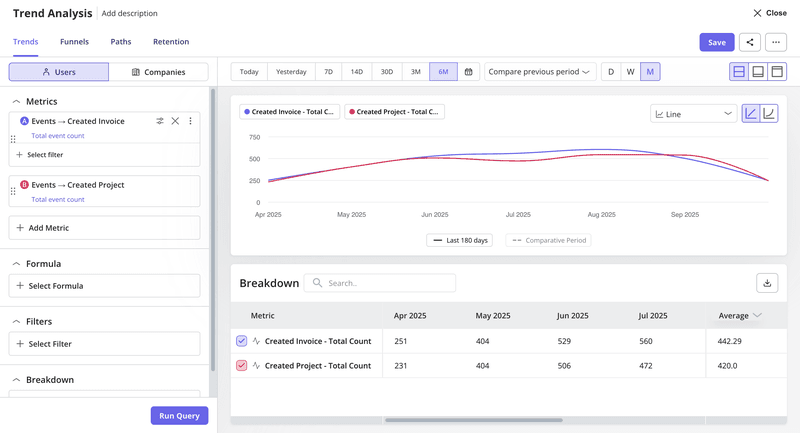
This on-the-ground intelligence is invaluable for refining your PQL definition and sales playbook. Your goal is to build a constantly learning growth loop that gets more intelligent and efficient over time.
Power your product-led sales strategy with the right tool!
A good PLS motion is all about timing. Your product keeps acquiring customers, and your team steps in only when it helps them move forward. To make that work, you need clear signals, clean data, and a tool that connects product usage with real conversations. Userpilot gives you that foundation, whether you’re supporting growing teams or moving into enterprise sales.
If you want to see how it all fits together, book a Userpilot demo and explore how to turn everyday product activity into revenue-driving moments.





